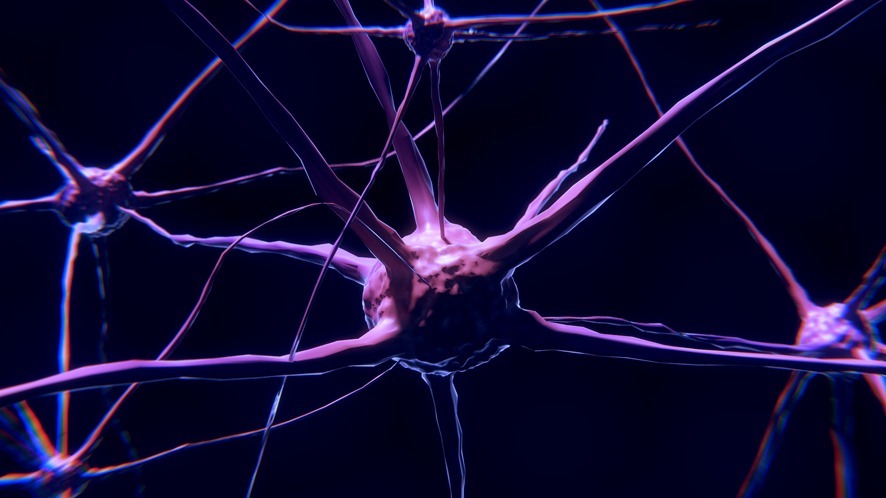Overview
What is a toxic relationship?
The term “toxic relationship” is widely used nowadays. We might feel that almost any relationship could be labeled as “toxic” or could contain “toxic elements.” And to some extent, that’s true. Every relationship can include elements that are “unhealthy” or at least have the potential to become harmful.
It’s important to use this terminology carefully, as any relationship is also a space for experience and growth. Our interactions with others challenge us to understand who we really are or want to be. Relationships can act as catalysts, helping us become more aware of ourselves, our desires, shadows, and how we want to express ourselves. To make certain choices, we must connect with others, and sometimes, experiencing what we don’t want helps us clarify what we do want and who we truly are.
In my view, a persistent “toxic relationship” is characterized by at least two people who prevent each other from exploring and deciding who they truly are. Such a relationship can hinder natural growth.
Perhaps you’ve explored my blog and come across the articles on the empathic-narcissistic dynamic? This destructive pattern involves complementary roles that reflect shared inner conflicts. These conflicts, combined with different ways of coping, create a magnetic attraction, a collusive magnetism that is common in nearly every toxic relationship. For an article on 12 signs indicating a toxic relationship, click here.
In a toxic relationship, interactions emerge from an internal script, a blueprint within each person. The interlocking processes follow a specific, repetitive pattern for both individuals, making further development impossible. Instead, they may become entrenched in a drama triangle that activates unconscious survival mechanisms.
In this state, each person battles the other without understanding the underlying issues. As a result, the internal conflicts go unnoticed, and they remain unconsciously trapped in a self-imposed limitation. This imaginary inner constraint, based on misprogramming, can lead to anger, rage, sadness, and despair.
A toxic relationship externally prevents you from looking within, where true realization happens. Only by understanding can you break free from external drama. In my view, a toxic relationship exists when we engage in a relationship that hinders our development in love, self-expression, courage, and awareness. This is when we become trapped in a cage of self-imposed limitations.
Can a toxic relationship work?
Many people are asking themselves this question. On my YouTube channel I have addressed this question in two (german) videos. You may use auto-translated subtitles:
Foundation of toxic relationships | 5 missing prerequisites for a healthy relationship (in- and outside)
A toxic relationship lacks prerequisites necessary for a healthy relationship. They are not (sufficiently) available. These prerequisites are not only missing in the relationship between the involved ones (= outside), but also inside – in their relationship with themselves! The absence of these prerequisites within affects the formation of a toxic relationship at the outside:
1. Trust
Outside: Repeating manipulation, degradation, harsh criticism, and devaluation fracture and eliminate trust. Unconsciously acting out of suppressed shadows and unresolved Conflicts. This is not happening consciously, but the participants may sense that something is wrong.
On a deeper level, partners in a toxic relationship lack trust in themselves and each other. This makes a deep, holistic relaxation (“letting go”) difficult. There’s always a subtle cautiousness, as each doubts the other’s “good intentions” (and their own). The participants feel bullied, overlooked, attacked, and hurt by each other repeatedly, leading them to believe they cannot trust their partner or the relationship.
Inside: There is a lack of self-trust as well. A persistent belief suggests something is wrong with them, leading to feelings, longings, and inner aspects that must be hidden, controlled, or banned. This results in an inner relationship of distrust, where participants feel unable to show and fully commit to everything they are (shadows, taboos). Their motives and ability to love are questioned.
2. Commitment
In-/Outside: The participants cannot fully commit to themselves or to each other. The commitment given is inconsistent, fluctuating. Both reject aspects of themselves and their partner but try to “fit” together. When self-suppression fails or problems arise, one party withdraws their commitment, creating distance. The other then experiences fear of loss and attempts to “force” the other’s commitment—even if hurt by the previous actions. This often results in inappropriate behavior, like chasing, opening discussions, excusing, or overstepping boundaries. In this process, the individual loses track of Self-Commitment—the “Yes” to oneself as an independent person.
3. Respect
In-/Outside: Both do not fully respect each other because they do not see each other completely. Silent expectations and projections merge at an unconscious level: “It should be like this, not like that…” There’s a persistent misalignment of the relationship and partner with what “should be”—an inner rigid blueprint. Stuck in these expectations, the partners lose sight of how things really are. A repeated misconception is that the partner must change if they don’t match the image or expectations. This generates an energy of rejection, confirming self-rejection within the other. In toxic relationships, partners rarely see each other as they truly are. A powerful, honest decision (Self-Commitment) based on acceptance and respect of the other’s individuality (e.g., “If they are like that and I am like this, what does that mean for me?”) seems not given. By focusing on changing themselves or the other, self-respect and respect for the other are lost (“Who am I, and what do I want? What are my limits?”).
4. Honesty / Openness
In-/Outside: Involved ones usually avoid confrontation openly and honestly. The relationship becomes strategic (e.g., “What can I say, and what should I avoid? Will this help me achieve my goal?”). Both try to hide things from each other due to the lack of trust. This often reflects dishonesty with oneself, as each conceals inner aspects that may be shameful or don’t fit their self-image. The same pattern extends to their outward behavior.
5. Healthy Boundaries
In-/Outside: Without these fundamental requirements, mutual respect and the creation of healthy boundaries are hindered. Those in toxic relationships often overstep each other’s boundaries, digging into each other’s lives and inner world without permission (see Respect). This fosters unhealthy entanglement. Over time, these dynamics deepen, and the individuals increasingly engage in unhealthy ways, moving further from a healthy relationship with themselves (and each other). They become absorbed in the “energetic field” of the other (what blurs the boundaries within as well), losing self-respect, honesty, and self-commitment. Instead of being “with themselves,” they are with the other. This erodes natural inner boundaries, leading to psycho-energetic symbiosis & causes confusion, self-alienation, dependency, and a blurred sense of individuality.
Maybe you agree, that the absence of these 5 prerequisites for healthy relationships definitely reinforces the genesis & dynamics of
toxic relationships?
3 Phenomena of toxic relationships
By the following three phenomena I´ll point out, how a toxic relationship within contributes to unhealthy dynamics in external toxic relationships.
1. Taboos & inner prohibitions | Shame, Guilt, and shadows
Shame is the root of so much suffering and pain. Humans feel shame about many things. For decades, even centuries, society has taught us to feel guilty – a socially imposed misprogramming. Take sexuality, for example. Consider how many people feel ashamed and blush as soon as the topic is mentioned, or have trouble enjoying their sexuality or discussing it naturally, even with their partners. Similarly, we often feel shame about “bad feelings” like envy, anger, and jealousy. Although these are natural emotions, we tend to suppress them. When aspects of ourselves trigger shame or guilt, we often hide them in a dark corner of our consciousness.
This is where a toxic relationship within can begin: we establish an unhealthy relationship with these aspects because they are “forbidden.” This leads to diminishing honesty within ourselves, and the emergence of a “role” that doesn’t fully reflect who we are. These rejected parts grow into powerful shadows and taboos. We carry these companions into every relationship, and a toxic relationship often demands the absence of these shadows. Initially, it may feel comfortable, as if the shadows have disappeared, but they remain, subtly influencing our feelings & interactions.
The aspects themselves aren’t harmful. It’s actually shame, guilt, and subsequent denial that can motivate us to enter and maintain toxic relationships. Even if the cycle is painful, it helps us shut out parts of ourselves that we have pushed away. In other words, a toxic relationship with someone allows us to successfully deny certain shadows and separate them from our self-image. As long as this is not working anymore: Conflicts in toxic relationships often escalate because these relationships served to suppress these aspects. When conflicts arise, they trigger these hidden aspects, often causing people to act out or bear more than they should.
Summary: Thoughts, feelings, and actions in toxic relationships are often influenced by shame, guilt, and partial self-denial. In these situations, we may agree to not fully be present (Self-Commitment).
Where You Can Start: Acknowledging taboos, prohibitions, and shadows is the first step toward a healthy inner relationship. That´s the field, where I start with my coachings.
Strive to accept all parts of yourself with honesty. This commitment lays the foundation for reconciliatory integration, gradually dissolving a toxic relationship within. As inner peace grows, our external relationships will also change.
2. Lack of clarity about who you truly are | Oscillation between poles
If you don’t know who you truly are or want to be (including relationships), this can keep you in a toxic cycle. People in toxic relationships often feel and act like a pendulum, swinging between extremes. At one moment, anger arises, and you feel ready to break free.
This aspect (let’s call it Aspect A) accuses others, thinking, “I won’t take this anymore! I’m done!” But then, another inner aspect (Aspect B) surfaces, filled with loneliness and a need for connection. Feelings of guilt may appear because Aspect A is then judged as “harsh,” maybe if that reaction (A) was for maintaining healthy boundaries.
This pendulum effect prevents integration, meaning clarity from Aspect A disappears once Aspect B dominates. Aspect B pushes you to reconnect, ignoring Aspect A’s insights and boundaries. This leaves you stuck in a cycle of regret and reconnecting, with no lasting resolution.
Questions to Reflect On: Who are you, and what is your true intention in this situation? Without an integration of these aspects, there is no stable answer to “Who am I, and who do I want to be?” A toxic relationship within lacks this integration, with conflicting parts that take turns making decisions.
What is needed: A healthy consistency achieved through the loving acceptance of all inner aspects. Without integration, the pendulum will continue to swing, maintaining both an inner and outer toxic cycle. A toxic relationship within perpetuates an external toxic relationship. An unconditional integration is needed. Look at yourself openly before taking action, asking, “Am I listening to all parts of myself? Am I considering everything within me?”
3. Avoiding insecurity | the partner as reference & guide | Identification
The true difficulty of a toxic relationship is that it can irrationally serve us, distracting from internal issues and keeping us from transforming insecurity into genuine values and self-commitment. Many people (unconsciously) remain in toxic relationships because their counterpart to serves them as delivarant for values, attitudes, and identity.
Insecurity within can be a trigger to reach out. Then it´s a relief to follow another’s lead, even at the cost of neglecting one’s true self and authentic expression. Eventually, we focus on what is expected of us rather than what we truly need (related to people-pleasing). Over time, this erodes access to our Instinct Nature.
Our individual self is overshadowed in this dynamic, making the counterpart a representative of our identity. This dependency and submission is an invitation for others who seek to control or influence. In doing so, we avoid facing our inner fears, and our true self is diminished.
Conclusion: A toxic relationship often reflects unresolved aspects within us. True healing starts with a compassionate integration of all facets of the self, fostering peace within and, ultimately, in our outer relationships.
6 steps to slowly integrate & heal a toxic relationship within
The three phenomena described above are only an excerpt of a much wider range of parallels between an external toxic relationship and the one within. The following six points to integrate & heal a toxic relationship within will assist you to address the 3 phenomena & the absent 5 prerequisites for a healthy relationship. Consequently our starting point is always the inner work!
1. Learn to shift shame
Do not feel ashamed – no matter what. Everything inside you is human and part of your human experience. You don´t have to empower shadows and act them out recklessly! But rejection, shame, and guilt won’t help you integrate these aspects in a healthy way. Allow yourself to feel and observe everything! If shame and guilt come up, please don’t feel guilty about it too (yes, humans can be quite confused!). Observe sensations and judgments without getting lost in them. That will initiate a shift to acceptance and thus, integration.
2. Identify & break up with taboos
Start within yourself consciously. Approach your impulses, sensations, and inner universe with curiosity and objectivity: “Interesting – I didn’t know this was also a part of me…” In moments of self-condemnation, simply add: “And interesting that I want to condemn this right away…” This may create a laugh or at least some distance from self-judgments and -devaluations. Once you realize you don´t have to do anything else than just acknowledging taboos, you can decide consciously how you want to react on them.
3. Observe your inner stage & become aware of your facets
Within everyone of us there´s an interplay of aspects and states – such as anger vs. need (see Aspect A & B). You can learn to recognize all parts & other conflicting impulses within you. Become aware! Encounter those facets with equal attention, observation and acceptance. Allow yourself to feel everything. Learn to recognize when one aspect takes center stage, and consciously decide to stay in touch with the experience and needs of the other aspects as well. Before making a decision, listen to both sides equally and avoid excluding anything. Ask yourself: “Is my present decision consistent with what I felt and decided earlier? Am I sufficiently considering who I was before?”
4. Reflect sincerely the roles & importance of your partner
Did somebody become the Guide of your self & life? Who is defining your values & goals? Is it really you?
Explore within yourself how sincere and honest you are with yourself. Examine how well you hear your own inner voice. Do you know who you are, who you want to be? Are you feeling insecure or unsafe? It´s totally ok. Just be aware of that. Do you dare to acknowledge uncertainty and affirm it? Are you ready to learn to listen to your own inner voice? And will you take seriously what you hear?
5. Work with the 5 prerequisites for a healthy relationship within
Ask yourself each and every day: “How can I feel & express more trust, respect, honesty/openness, healthy boundaries, and self-commitment towards myself today?”
6. Consciously Accept & welcome contradictions
Start within yourself. Accept what is inside of yourself, and assume a positive purpose for all phenomena that arise within you. Trust that this purpose will become clear one day. Normally a contradiction is just an initial step, an invitation for integration. Thus, welcoming contradictions means walking the first step towards integration. Allow yourself to accept your own multi-dimensional expression within (without needing to understand everything), and – grant that same freedom to others!
Hopefully this article served valuable insights and steps on healing & integration on your path to a healthy relationship within. You may leave a comment, share this post or forward it to people who might benefit from it.
May you feel whole, complete and accepted.
Namasté,
Yours Kristina
Photo by Crane 17 on Pixabay
Invitation
If you’re considering being accompanied through the mirror process of inner work, you can book a free preliminary talk in my booking calendar at the top right of this page or below this entry.
The model assumptions are based on years of professional observation, personal experience, and knowledge from psychoanalysis, psychodynamics, and developmental psychology. For more information, please refer to the Copyright notice. The articles, including assumptions and hypotheses, may be shared freely, but please always provide attribution (my name and the website).







